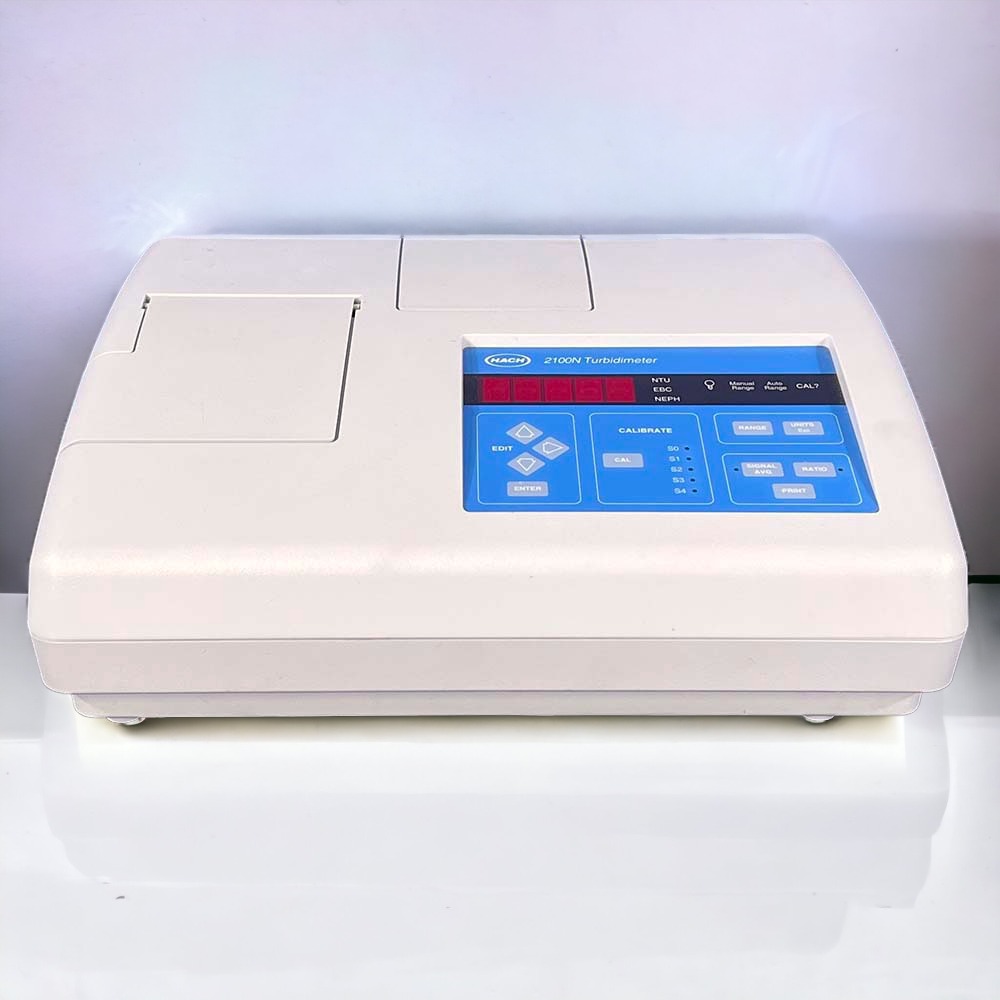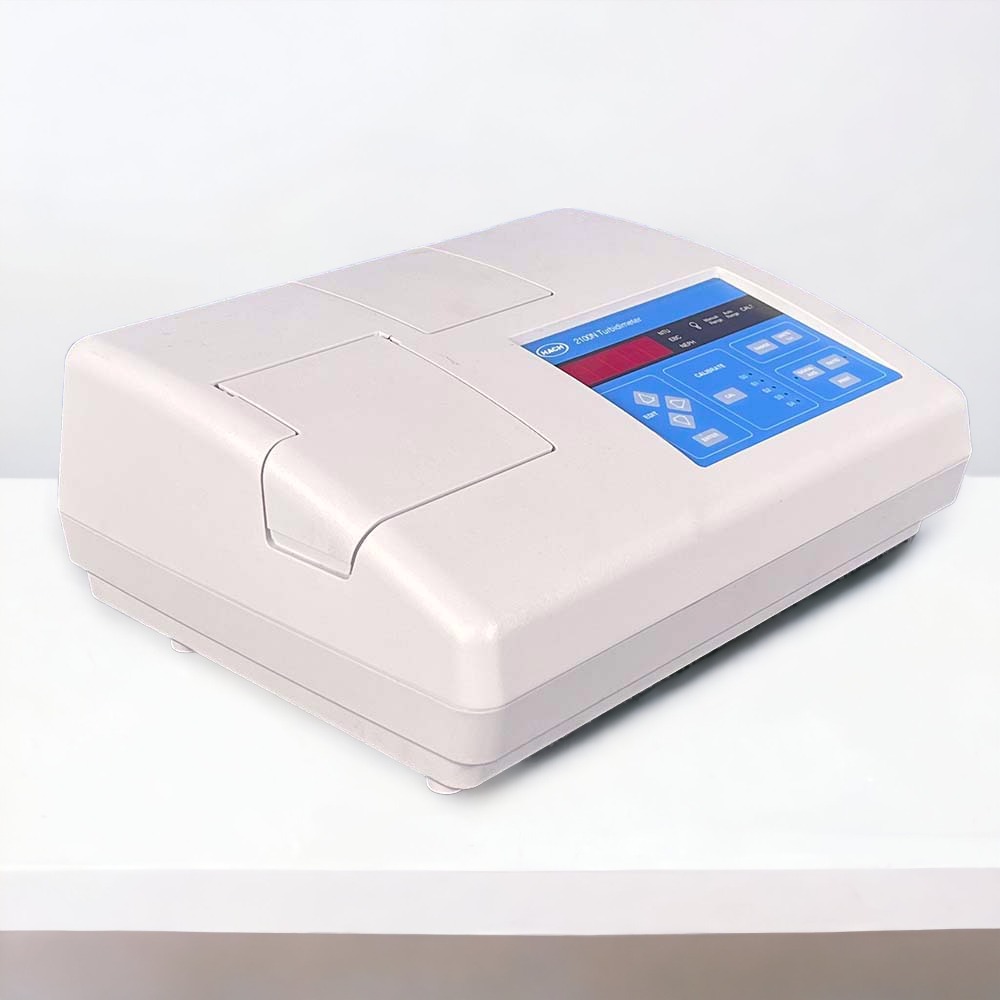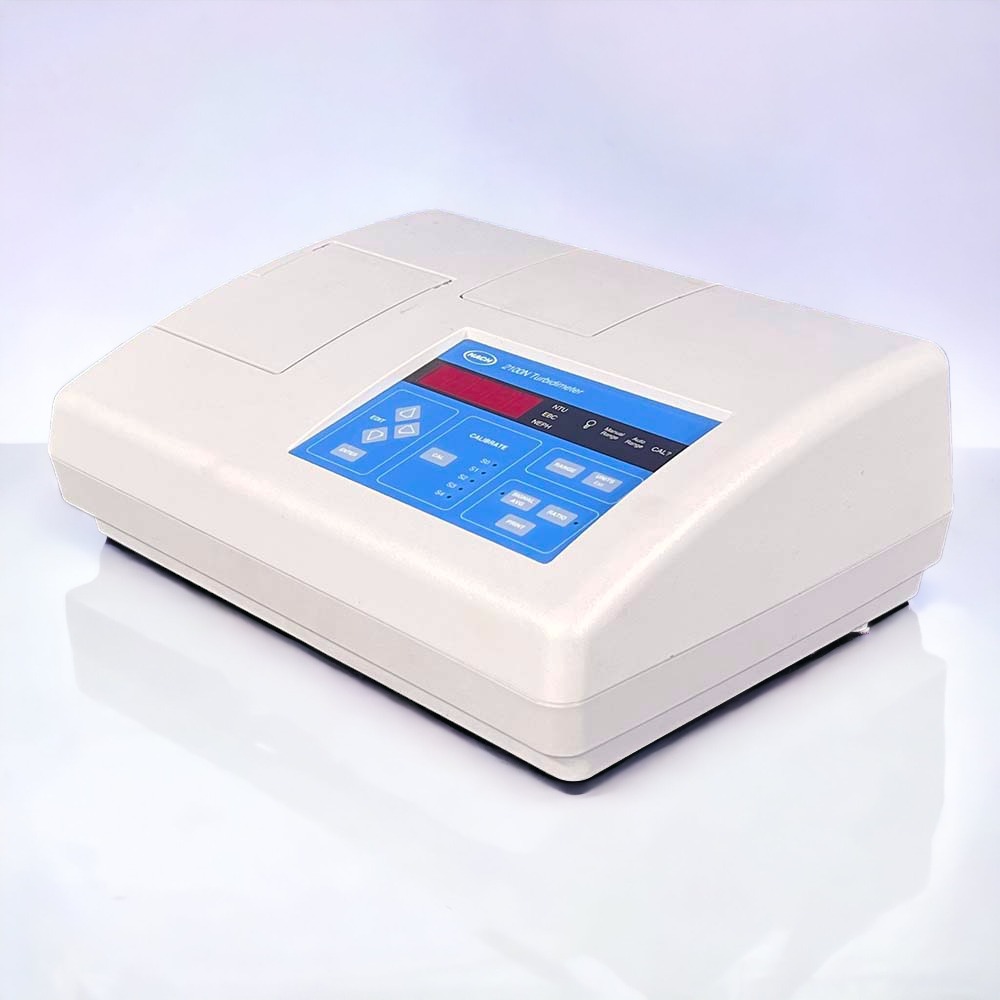Description

It’s Purpose:
The Hach 2100N Laboratory Turbidimeter is used to measure the turbidity (cloudiness or haziness) of a water sample. Turbidity is an important water quality parameter that indicates the presence of suspended particles, such as clay, silt, algae, and microorganisms, that scatter light and make the water appear cloudy. By measuring the amount of scattered light, the Hach 2100N can provide a quantitative measure of turbidity, which can be used for monitoring water quality, determining water treatment efficacy, and complying with regulatory requirements.
Acme’s Summary:
The Hach 2100N Laboratory Turbidimeter is a bench-top device used for measuring the turbidity of water samples. It typically operates by shining a light at a 90-degree angle into the water sample and measuring the amount of light that is scattered by suspended particles in the water. The scattered light is detected by a photometer and converted into a turbidity measurement, which is displayed on the instrument’s display screen.
Top 3 Competitors
- YSI TRACER 556 portable turbidimeter
- Thermo Fisher Scientific Explorer EX120 portable turbidimeter
- WTW multiFLEX turbidimeter.
5 Best Things:
- Accurate and Reliable Measurements: The Hach 2100N is designed to provide accurate and consistent measurements of turbidity over a wide range of concentrations, making it an ideal choice for monitoring water quality.
- Easy to Use Interface: The Hach 2100N features a user-friendly interface that is easy to navigate, making it simple to operate even for those with limited experience using laboratory equipment.
- Data Storage and Reporting Capabilities: The instrument is capable of storing data for multiple samples, and it can also generate reports for later analysis.
- Portable Design: Although designed for laboratory use, the Hach 2100N is compact and lightweight, making it easy to transport from one location to another.
- Compliance with Regulations: The Hach 2100N is designed to comply with a variety of regulatory standards, such as EPA, ISO and Standard Methods, ensuring that the results obtained with the instrument can be used for compliance purposes.
 (4)
(4)









